Cannabis is a huge hit, and not just among people. Deer, birds, moles, squirrels, and raccoons are just a few of the larger animals that pester outdoor growers, while insects and smaller-sized pests target both outdoor and indoor growing environments.
Regardless of size, when it comes to cannabis pests, the best solution is prevention.
One of the largest advantages of indoor growing is having complete control of the environment. From climate to light schedule, cultivators can create the ideal growing space — but without pest prevention, your crop is still at risk of insects and infestations.
It's common to have cultivation facilities inspected for pests and vermin in many different states and counties.
The County of Los Angeles Cannabis Facility Inspection Guide 2021 states that "The facility shall at all times be constructed, equipped, maintained, and operated as to prevent the entrance and harborage of animals, birds, and vermin, including, but not limited to, rodents and insects. Vermin inside a cannabis facility could lead to contamination and possibly disease transmission. If evidence of vermin infestation is present, the facility should self-close, have a professional pest control company eliminate the infestation, properly clean and then reopen."
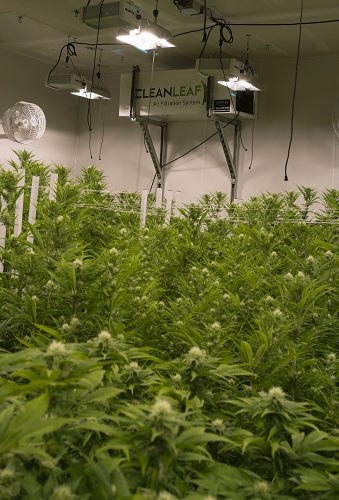
The first step to preventing pests and infestation is to keep grow rooms clean and free of dirt and debris. Overlooking cleanliness makes it easier for pests to find their way into grow rooms, where they can wreak havoc and destroy entire harvests.
Air filtration systems continously clean and circulate the airstream to perfect growing conditions and keep plants protected.
CleanLeaf air filtration systems overcome the most common grow room threats. Each CleanLeaf series is specifically-engineered for cultivators looking for the safest, most efficient solution for air filtration.
Find out how to identify insect pests and other ways to prevent them below (detailed prevention instructions can be found at the bottom of this article).

Aphids - One of the most common cannabis pests
| Identify | Solutions |
|---|---|
| Colors range between grey, white, green, yellow, black, brown, or red based on their stage of life and where you're located. | If a plant is infested move it to an outside area where you can spray it to cut down the population. |
| They are oval-shaped and may or may not have wings. | Remove leaves and buds that are heavily infected. |
| They will feast on any part of a plant by biting into the leaf, stem, or bud to feed on the juices inside. | Insecticidal soaps |
| They generally live in colonies of tens or hundreds and hang out on the undersides of stems and leaves. | Neem oil |
| Once attached, an aphid becomes fixed and is easy to spot. | Spinosad |
| Females do not require copulating to reproduce and will produce offspring between 3 to 100 times a day. | Essentria IC3 |
| Aphids secrete large volumes of sugary liquid water known as honeydew. Honeydew drops attract sooty mold that can grow on honeydew deposits found on leaves and branches turning them black. | |
| If you notice ants around the base of your plant, this is also a sign of an aphid infestation as the ants are attracted to the sweet honeydew and protect aphids from predators. |
Barnacles
| Identify | Solutions |
|---|---|
| Barnacles are scale insects and can appear in different colors and patterns. | Use a small one-hand pressure sprayer to spray off the bugs. |
| Scale insects may vary in appearance but act the same. | Insecticidal soaps |
| They can seem like growths on a plant or look like bugs. | Neem oil |
| They hang out on stems and under leaves. | Spinosad |
| Once they're established barnacles become stationary and suck the life out of the stem and leaves of plants. | Essentria IC3 |
| If infestations get too bad, your plant will start to weaken. Similar to aphids, barnacles also release honeydew. |


Broad Mites
| Identify | Solutions |
|---|---|
| Broad mites are very small and difficult to see even under a microscope. | Neem oil |
| When your plant is infested with broad mites or russet mites new growth may come in twisted, blistered, and appear wet or plastic-like. | Essentria IC3 |
| If your plant is in the flowering stage, buds may turn brown and die. | Insecticidal soaps |
| Broad mites normally hang out inside the crevices of leaves inside buds and they lay eggs inside of the plant. | Mighty wash |
| Infestations are commonly diagnosed as overwatering, heat damage, or a nutrient deficiency. | Avid |
| Prevention is different for broad mites since they are one of the toughest to get rid of. | Forbid |
| When dealing with broad mites, it's recommended that you treat your plants for at least a few weeks at several times a week or even daily. | Diatomaceous Earth |
| Repeat treatments for five more weeks after the mites are gone. Since they lay eggs inside of the plant they can come back if not completely destroyed. | Heat |
Caterpillars, Inchworms, and Loopers
| Identify | Solutions |
|---|---|
| Caterpillars have a lot of legs and come in a variety of colors. | BT Spray |
| Loopers have two sets of feet, one at that back and one at the front. They arch their back to pull the rear feet forward. | Spinosad |
| Inchworms have three pairs of front legs and either two or three pairs of rear legs. These worms can be found in any color and are any size about half an inch. | |
| All three will eat through leaves, buds, stalks, and the main stem. | |
| They defecate often with fungus and rot quickly follows. | |
| They are not as common for indoor grow rooms and if proper air circulation is in place they should not be an issue. | |
| If you notice holes in your leaves and think that these worms are in your plants, spray pyrethrum and shake your plant to make them fall out. |
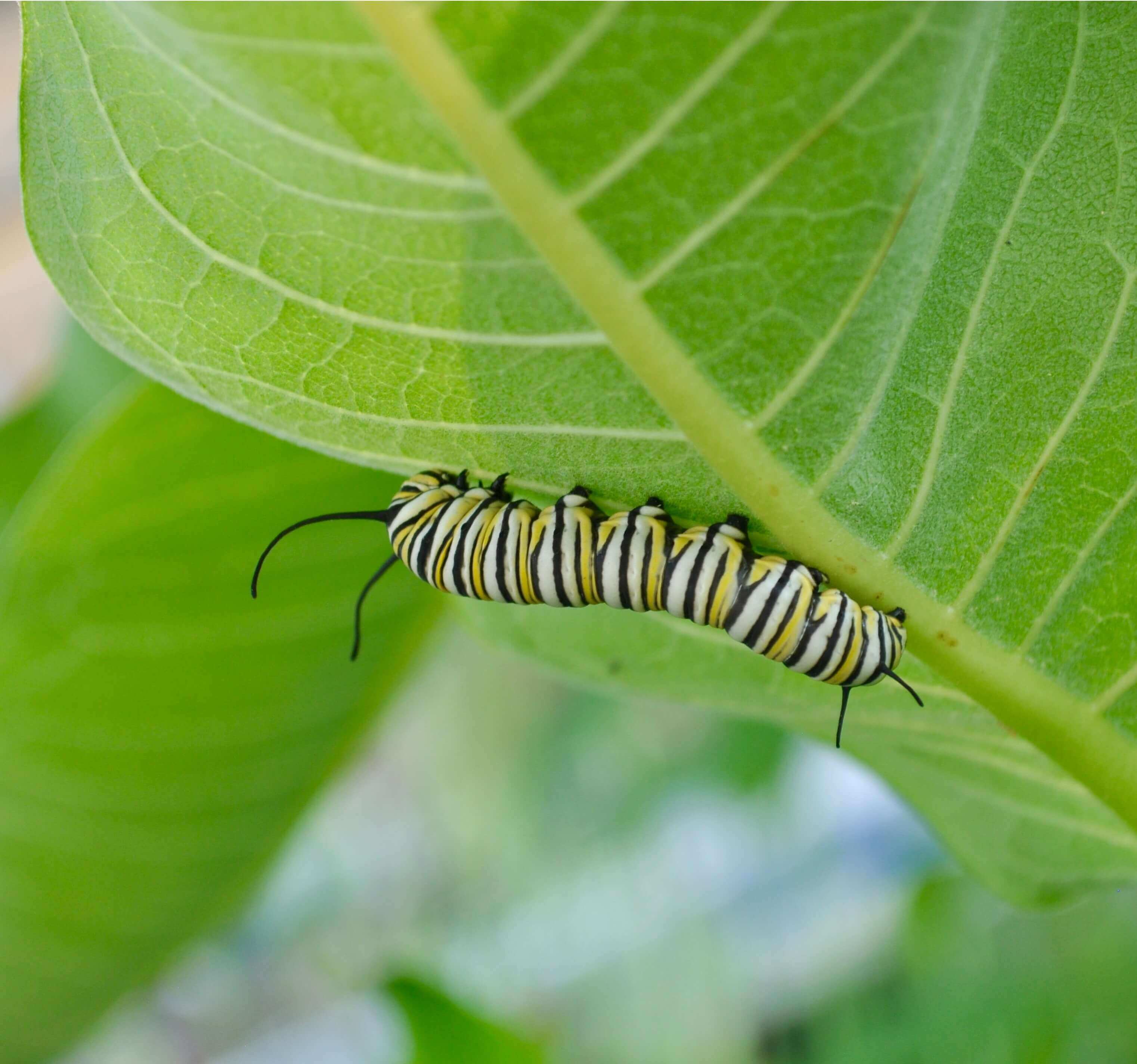

Fungus Gnats
| Identify | Solutions |
|---|---|
| Fungus gnat larvae are hard to see with the human eye and have transparent bodies and black heads. | These gnats are common for plants that are watered too often. |
| They enjoy dark and moist environments and can be found at the base of your plant. | Allowing the top inch of soil to dry out before watering can make them go away on their own. |
| Adults are grey to black in color and are very small with long legs. | Blow air over the soil to dry it out making it harder for them to fly around and reproduce. |
| The females lay around 200 eggs per week within the first few inches of moist soil and larva can be typically be found in water runoff. | Treat the top layer of soil with Neem oil. |
| Adult fungus gnats will generally be found swarming around the lower portion and at the base of your plant along with the larva. | Apply Diatomaceous Earth to the top of the soil and around edges. |
| Once infested in the root system, these insects damage larger roots resulting in weak plants, slow growth, and fading foliage. | Yellow sticky traps placed on the floor near plants and hanging near the top will help discourage their attack indoors. |
| Fungus gnats stick to the sticky flowering green and are almost impossible to remove. | If you have a bad infestation, it may take weeks of good watering practices before they're gone. |
| The damage from these pests makes cannabis plants very vulnerable to various types of fungus. |
Leaf Miners
| Identify | Solutions |
|---|---|
| Leaf miners are the larva of any bugs that live inside leaves and tunnel through them to eat. | Environmental control indoors and in greenhouses will prevent bugs from laying eggs in your plant. |
| They are normally around 1/8" thick when hatching. | Remove affected leaves if you can, if you don't want to remove the leave, crush the larva by pressing your fingers together where the trail is visible. |
| It is uncommon to notice leaf miners before noticing the damage they leave. | Spinosad |
| These pests live inside the tissue of leaves, eating the best parts, and leaving a trail of damage behind. | Neem oil |
| If you find a leaf that a miner is burrowing through it may be visible. | BT spray (if evidence of caterpillars or loopers is present) |
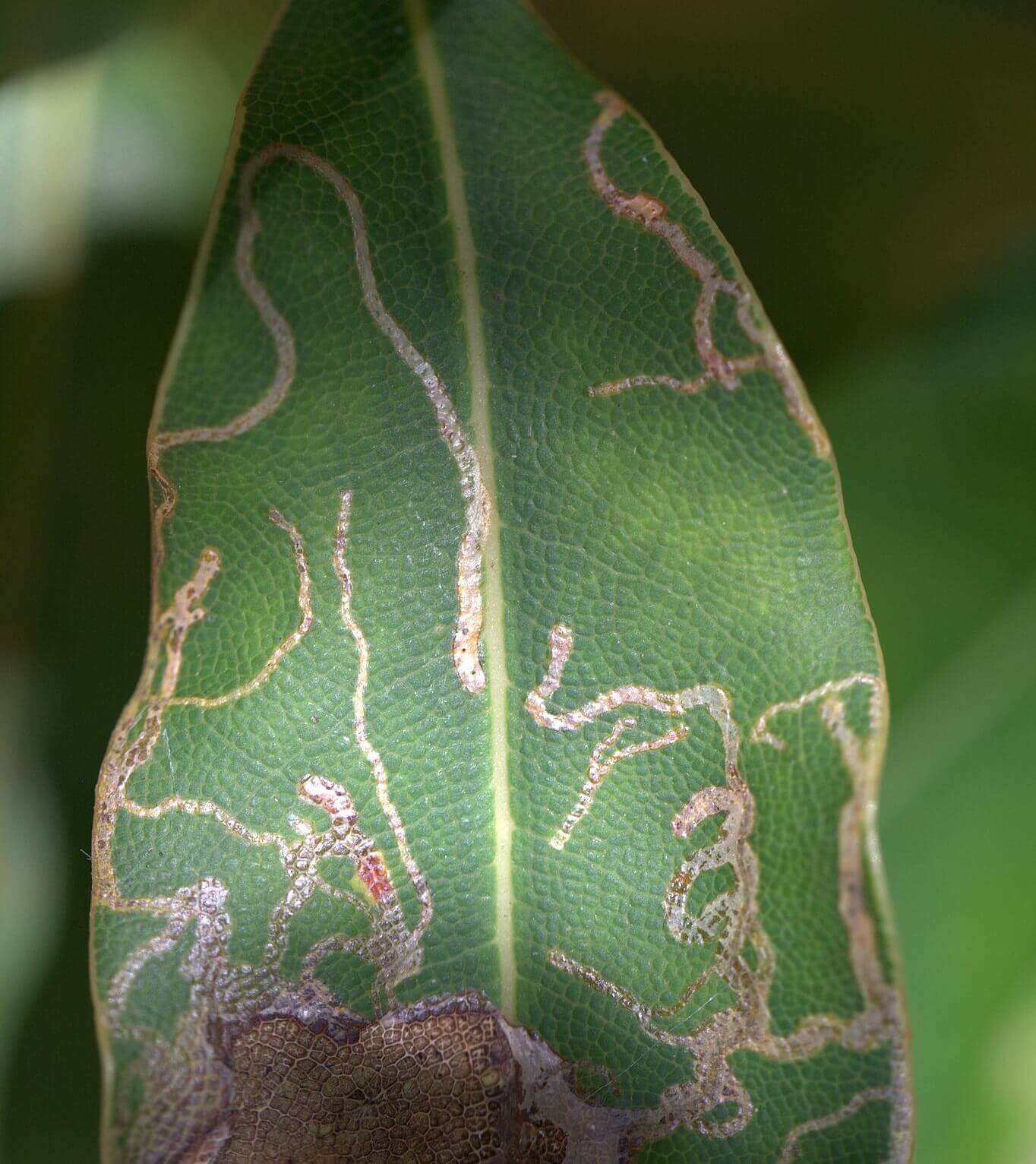

Spider Mites - Common pests that are difficult to get rid of
| Identify | Solutions |
|---|---|
| Spider mites live underneath the leaves of a plant and are so tiny they look spots to the naked eye. | Reduce their population by controlling the heat, this makes it harder for them to reproduce in cooler temperatures. |
| The leaves of your plant will be covered in yellow, orange, or white speckles which may be misdiagnosed as a nutrient deficiency. | Blowing constant air over the plants combined with the cooler temps creates a cool breezy space and makes it harder for reproduction. |
| When spider mites attack a certain spot you will see a lot of specks near each other and the leaves may start to appear yellow or bronzed. | Taking plants outside and spraying them off if possible to reduce population before starting the main treatments. |
| When the infestation grows you'll notice webbing that may cover foliage, flowers, and even entire buds. | Spiders may be brought in by a new plant or a clone. It's important to look for new bugs or tiny spots on leaves using a microscope or magnifying glass. |
| Their sharp mouths pierce individual plant cells and suck out the liquid that keeps your plant alive. | Keeping new plants in quarantine for at least a week and checking daily for bugs is great practice to implement. |
| Spider mites are visible under a strong magnifying glass and are commonly brown with two spots but can be yellow and white or red. | Mighty wash. |
| Female spider mites become fertilized for their entire life cycle once they mate and lay on average around 100 eggs every five days (around 1 million a month). | Spinosad |
| 75% of all spider mite eggs become female. | Essentria IC3 |
| Spider mites will quickly take over a plant and can easily develop resistance to almost any method used against them. | Insecticidal soaps |
| It's recommended to use various methods to remove them. | Neem oil |
| Diatomaceous Earth |
Thrips - Common insect pest for indoor growers
| Identify | Solutions |
|---|---|
| Because it is difficult for thrip to reproduce in large quantities outside they make their way into indoor growing spaces. | Insecticidal soaps |
| They are very very small and can almost be any color. | Neem oil |
| They may appear dark, yellow, golden, or translucent. | Spinosad |
| Based on stage of life they may or may not have wings. | |
| It's hard to see a thrip on its own but they generally move in herds together. | |
| Thrip leave behind shiny silver or bronze spots where the leaves were bitten. Damage has been described as dried spit. | |
| They strip leaves of chlorophyll and the leaves turn brittle and dark and then crumble. | |
| Female thrip creates a hole in the plant matter where she leaves her eggs. | |
| Thrip flourishes and reproduces inside of buds. | |
| Shaking branches will make thrip fly and/or jump to other places to live. |
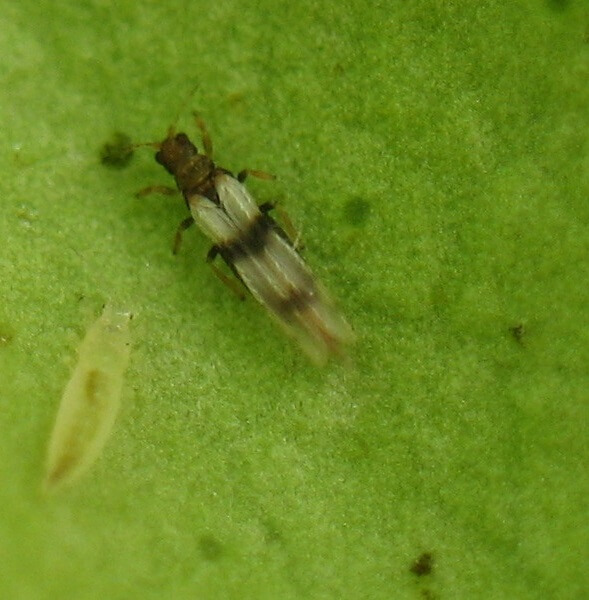
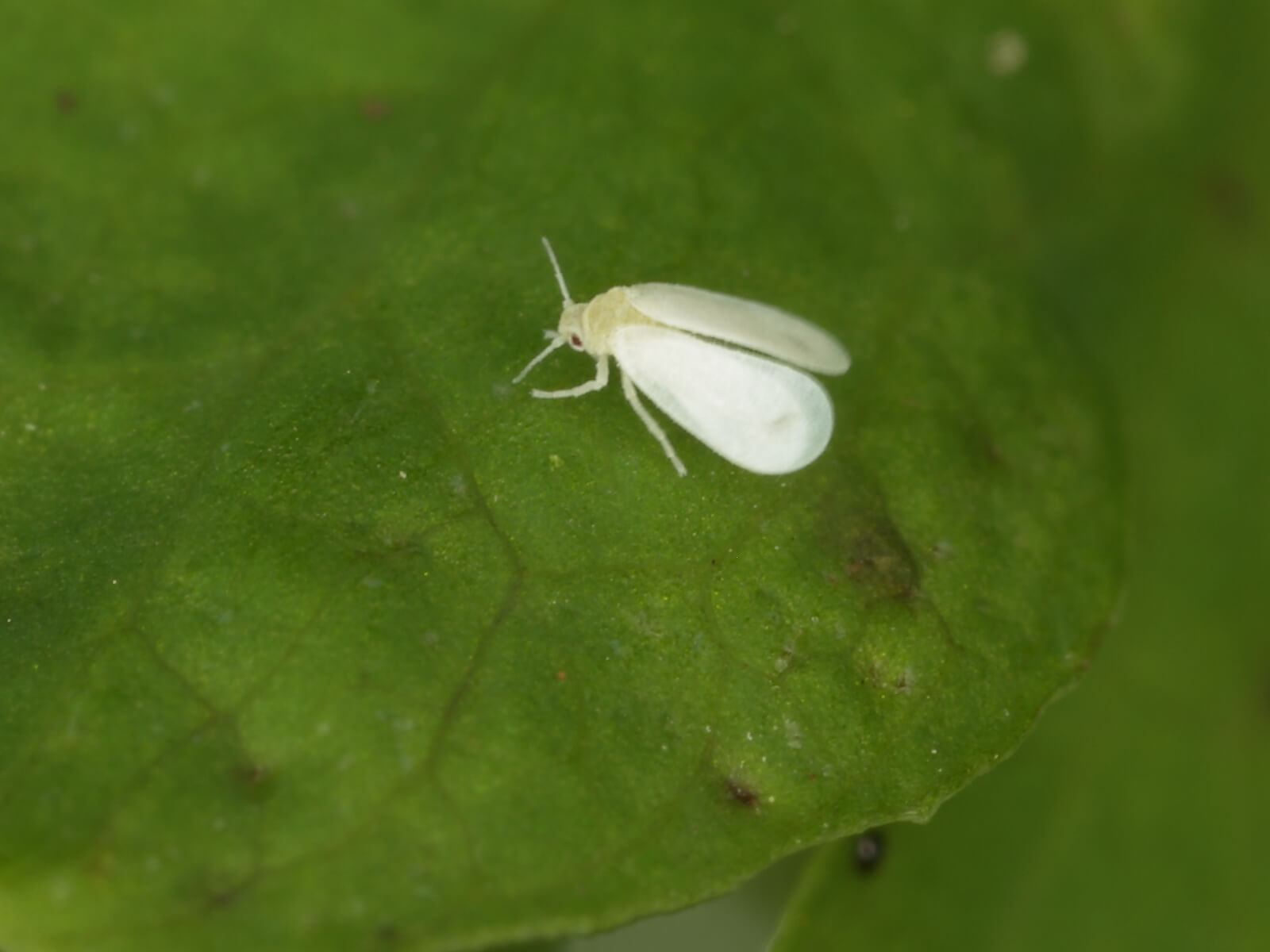
Whiteflies
| Identify | Solutions |
|---|---|
| Similar to spider mites, whiteflies hang out and steal nutrients from underneath cannabis leaves. | Insecticidal soaps |
| They are easy to spot but can become hard to get rid of if ignored. | Neem oil |
| Their eggs stick to the leaves like glue and cannot be wiped off. | Spinosad |
| They prefer weak plants and attack them from the top down. | Essentria IC3 |
| Leaf damage from whiteflies is similar to spider mites. | The longer damage continues the more strength and energy. |
Solution Methods
Move your plants outside and use a power sprayer to physically spray off all the bugs. You should also remove heavily infected parts of the plant and for 2x effectiveness use an insecticide while spraying to treat future attacks.
| Avid | Avid is harsh and expensive but works if nothing else is getting the job done. This insecticide infiltrates the inside of the plant tissue and should not be used during the flowering stage. Don't use this product more than once or twice in a row as the mites can become resistant. If you decide to use systemic insecticides, switch back and forth between Acid and a product like Forbid. |
| BT (Bacillus Thuringiensis) Spray | A biological insecticide that kills larva and prevents pests from being able to eat. You'll want to apply this spray as soon as you notice any signs of an insect infestation. |
| Diatomaceous Earth | A powder-like substance that is sprinkled on top of the soil and anywhere else in the room. Diatomaceous Earth is harmless to animals and plants but is exceptionally sharp at a microscopic level. It will tear and dehydrate mites on physical contact but it will not get rid of an infestation. It will, however, prevent and slow it down when used effectively. It will kill adults and larvae fungus gnats that touch it. |
| Essentria IC3 Insecticide | Also known as bed bug killer, Essentria IC3 is a mix of various horticultural oils that are organic and safe for humans. This method only stays effective on the plant for about 8 hours so you'll need to apply it daily or combine with another option. |
| Forbid | Like Avid, Forbid is made with strong chemicals, is expensive, and also infiltrates the inside of plant tissue. Don't use this product more than once or twice in a row as the mites can become resistant. If you decide to use systemic insecticides, switch back and forth between Forbid and a product like Avid. |
| Heat | Heat runs out broad and russet mites. Growers may try and get rid of them on small plants by submerging the plants in hot water for 10-20 minutes at 105°F or by heating up to grow room to 115°F for 60 minutes. Please keep in mind that this can be dangerous to the health of your plants. |
Insecticidal Soaps |
Insecticidal soaps weaken the outer shell of aphids, barnacles, mites, thrips, and whiteflies and are safe to use on plants. Additional applications may be required. Even though this is considered safe it's best practice to avoid getting any on buds. |
Mighty Wash |
Can be used to drench leaves 15 minutes before lights go out ensuring that the foliage under the leaves and top of your soil is covered. Use a mister to spray and a fan to help dry. |
Neem Oil |
An all-natural remedy that is effective against many types of bugs and mold. However, it leaves an unpleasant smell and taste so don't let it near your buds. |
Spinosad |
Spinosad products are organic and completely harmless to pets, children, and plants. Spinosad can be used directly to kill aphids and leaf miners and can be sprayed liberally. It can kill barnacles but their shell makes them resistant, so it’s important to cover all of the vegetation. Not as effective as BT spray for caterpillars, inch worms, and loopers, but can kill them if sprayed directly on contact. Spinosad can be used to kill spider mites, thrips, and whiteflies on contact and can be used when watering plants to kill spider mites from the roots. |
While there are a number of solutions for managing cannabis pests, we recommend implementing prevention first to avoid the risks. Time is money, and the results of cannabis pests can be devastating for crops and costly for cultivators. Air filtration helps prevent the risks!
CleanLeaf air filtration systems use powerful blowers to force air through specialized filter media, where its cleaned and recirculated throughout the grow room.
Air filtration systems are made available in many different styles and configurations to meet the demands of almost any application – CleanLeaf air filtration systems are designed especially for use in grow rooms and have proven to be more effective than HVAC and TiO2 PCO systems.
Get in touch with us to learn more about cannabis pest prevention and how CleanLeaf air filtration systems can help!
You may also like:
• How Does CleanLeaf Work?
• Maintain Grow Room Air Quality
• CleanLeaf Lab Results